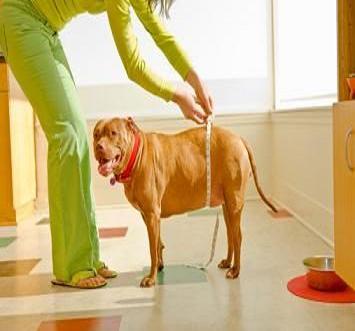How to Tell If Your Dog Is Overweight

Maintaining a healthy weight is just as important for dogs as it is for humans. The extra pounds may look harmless on the dog at first, but it would not be long before you notice a considerable decline in its activity and stamina. Ignoring the extra pounds on your canine friend may eventually lead him/her to gain even more pounds and eventually become obese, which would consequently introduce a wide range of more serious problems, for example arthritis.
If you love your dog and truly care for its well-being, then you ought to monitor its weight, determining its weight from time to time using the same system that is used by the veterinarians.
Instructions
-
1
Observing your dog’s appearance is the most effective way of determining if it is overweight. You can know that it is fat by simply looking at it, though you would need to be aware of what counts as a healthy look and build for your dog’s breed.
However, if you want to confirm this, you should observe its chest and the base of its tail. An overweight dog will typically have considerable fat deposits in the aforementioned areas. If you notice fat deposits on the limbs and the neck of your dog, it is a clear indication that it is no longer overweight, but is in fact severely obese. -
2
Another thing that the veterinarians normally use to tell if a dog is overweight is its ribs. While some amount of fat always covers the ribs, it will be easier to feel the ribs of a dog that has an appropriate weight. However, if you have trouble feeling the ribs and actually have to struggle to feel them, then there should be little to no doubt in your mind that it is overweight. In case you are unable to feel your dog’s ribs no matter how much you try, consider it as an obesity sign.
-
3
Another area of the dog that can be used as a reference to tell if it is healthy or overweight is the abdomen. If your dog has a visible abdominal tuck, you can breathe a sigh of relief because your dog is of a healthy weight.
However, if the abdominal tuck of your canine is very less, then it is definitely overweight. In case your dog does not show an abdominal tuck at all, there should not be any doubt left in your mind about it being severely obese. -
4
Observe and feel your dog’s spine. If the spine is prominent and feels bony to touch, then your dog's weight is appropriate. However, if the spine is not very prominent and has thick deposits of fat around it, then your dog is definitely overweight.







